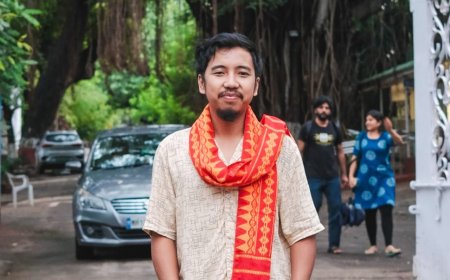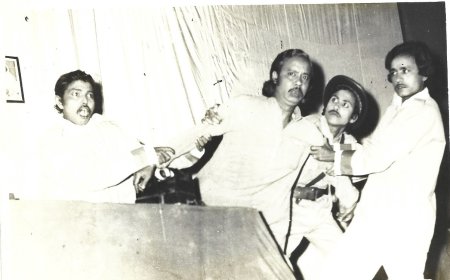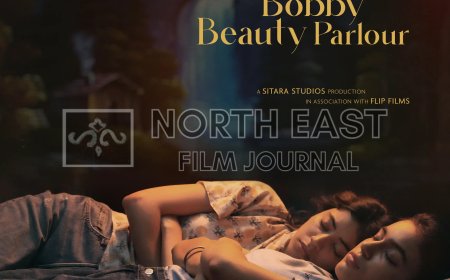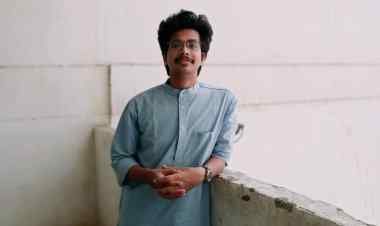Interview: DEVASHISH MAKHIJA TALKS ABOUT HIS CUTTING-EDGE FILM – JORAM
Dr. Shoma A. Chatterji engages in an extensive interview with the esteemed director-writer-producer, Devashish Makhija, whose latest film, JORAM, has garnered widespread acclaim on an international scale.
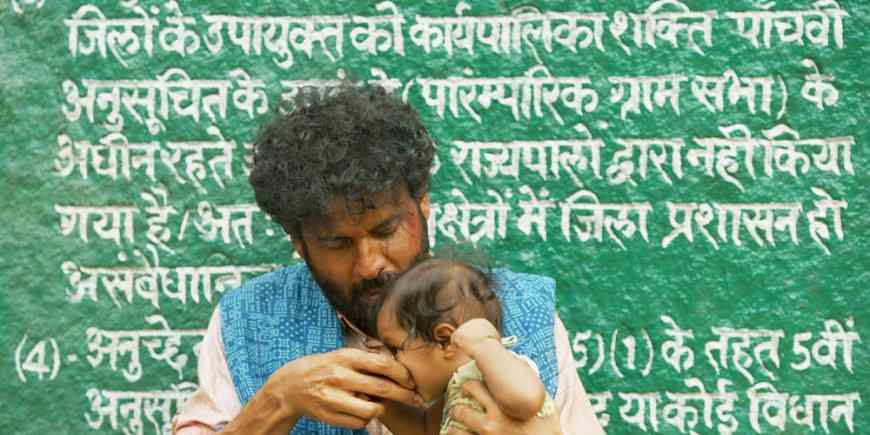
Devashish Makhija is a filmmaker you should take with a cupful of salt, or, perhaps more. With every film he has directed, short or long, he has managed to make a statement that leads you to rethink about the functions of cinema as we understand it. He has never been to a film school but directs, produces and writes his films. He has not done any course in writing but has won awards for his children’s books. He has also done a graphic novel though one has doubts about where he has received formal training in art.
Which is the Adivasi tribe you have described in the film? I am asking this because on my last count some years ago, there were more than 200 tribes and communities, with the population numbering between 25 and 30 million. Looking at their tattoos, the jewellery the women wear, the hair clips Dasru wears in the beginning tell us that this is a specific Adivasi tribe probably in some corner of Jharkhand. Kindly correct me if I am wrong.
I am always careful and paranoid of ‘appropriation’. I am not an adivasi. To show a tribe from the real world and then take liberties with their ‘story’ would be disrespectful in my books. So we ‘created’ the tribe, but of course by mixing and matching elements from multiple tribes – the dongria kondh, the paraja, and several others. There are much much more than just 200 tribes / communities in this country. The number of tribal dialects in the nation would run into thousands. But because of our mind-numbing preoccupation with ‘development’ at any cost most of these are dying (or have died). The dialect we’ve used in the film is also a fabricated one, by mixing and matching several dialects of the region, primarily the Nagpuri dialect spoken in Jharkhand / the Chota Nagpur region.
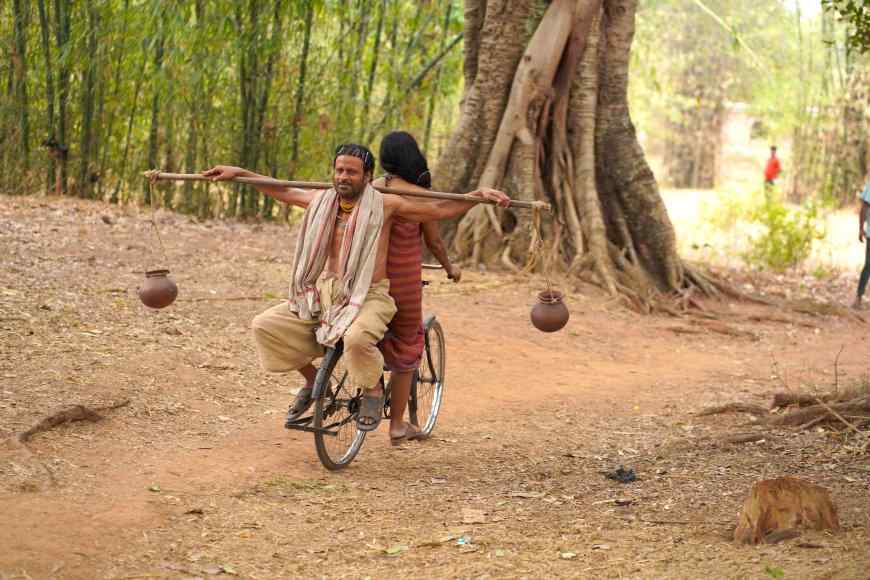
Image: film still, Image courtesty: Punit Reddy and Padmaja.
What was the main inspiration for you to write this very unique story?
To reach out to wider audiences who do not think about the repercussions of our choices on people outside of the unsustainable cities we inhabit. I needed a story that would be hopefully engaging, thrilling, involving, yet be able to throw up difficult, uncomfortable questions about where we have arrived as a people, a society.
Did you decide on the cast while you were writing the story or after the script was ready? Explain in detail.
I first wrote the script in 2014-15. Like with all such films it took years to find funding. In the meanwhile I made numerous short films, including ‘Cycle’ which was cut from the same cloth ‘Joram’ is. After ‘Taandav’ and ‘Bhonsle’, it was Manoj who brought Zee Studios and me (along with my producer-partner on Joram - Anupama Bose) to the same table to see if we could collaborate and make this film. All other casting happened once the film took off. I don’t write with anyone in mind. When I first wrote the earliest draft Manoj hadn’t even come into my life. But as the years pass and I try to set up my films again and again with different possible collaborators it keeps getting reshaped and redrafted. Once Zee Studios came on board I wrote another draft to bring in more scale to the film than was there earlier.
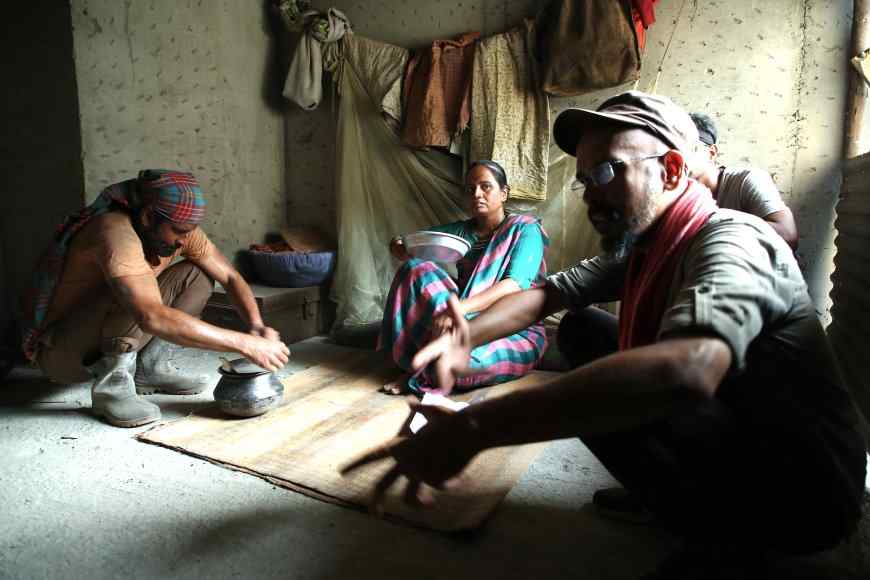
Image: working still, Image Courtesy: Punit Reddy and Padmaja
None of your films are aimed at entertainment or education or even have any social agenda. Taking this into account, what does "Cinema" mean to you?
Actually they do. I do intend to make viewers think about what we’re doing wrong, with all my films. I wouldn’t call it an ‘agenda’, but it is definitely an ‘objective’. I operate in multiple mediums. I’ve written a novel, a book of short stories, several children’s picture books, poetry, done graphic art, made experimental short films, but when I wish to reach out to many more people with what I want them to think about, it is Cinema that does the deed. Cinema utilises so many subset-mediums within this one medium (image, sound, music, colour, performance, art, the spoken word) that it allows me to access an audience in wider ways than any of the other mediums I have explored. Its my most powerful tool to rattle my audience with, to make us all reconsider the choices we have made that has brought so much injustice to pass.
Considering that the film was entirely shot on location, which are the areas you shot in and how long did the shooting take?
A small part of the film was shot in and around Mumbai. But a major part was shot in Jharkhand, covering all its parts from Ranchi all the way down to the south, and almost spilling over across the border into the northern reaches of Odisha. Jharkhand is the one state that offers up a most diverse landscape – from the densest, most fertile of greens, to the driest, most infertile of reds. The south is where the jungles are the thickest, yet the frighteningly destructive iron ore mining is the most rampant. Shooting took 28 odd days. But we prepped for almost 6 months before that, to be able to achieve the shooting in such a few days. Resources are always bare minimum on a film this hard to find backing for.
A word here for the team of warriors that made such an impossible film happen in extreme places where no one had ever shot before. The production, direction teams, and the many departments, and actors. We put everyone through hellfire. But hopefully the final film makes all the battle scars worth it.
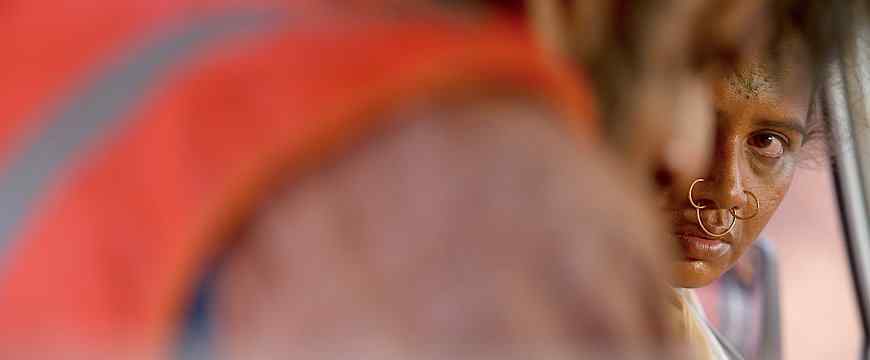
Image: film still, Image Courtesy: Punit Reddy and Padmaja.
You have roped in a mixed cast of veteran performers and relatively new faces. How do you direct your film? Workshops? Rehearsals or spontaneous takes?
A film where hopefully all the pieces add up to a satisfactory whole can never be made with spontaneous / improvised takes. If the film feels like it's flowing more or less well enough then rest assured there has been a meticulous and detailed preconception of all the pieces that make up each mise-en-scene. We do multiple readings, together, and singly. The incredible actor from the National School of Drama - Bhumika Dube led her team consisting of her fellow NSD-ians Sannjeev Jaiswal and Suman Purty in workshopping all the actors – trained, untrained, experienced, first-timers – over many days. Together, we worked on crafting the semi-fictitious tribal dialect also, rehearsing the scenes endlessly with the actors speaking them, so that when we shoot the actors are not conscious of speaking in a tongue different from their natural one. We do this much prep only so that actors of so many diverse origins, regions, trainings, approaches – along with all the non-actors from the region and villages itself – look and sound believable when they inhabit the same frame together. I’m hoping this translated convincingly on screen.
What kind of chemistry do you have with Manoj Bajpai? I am asking this because this is your third film with him.
He is more than just an actor for me. He is the rare, unheard of actor who is also an ‘enabler’ of the difficult cinema. He brought producers onto Taandav and Bhonsle. And this time around he brought Zee Studios and us to the same table to collaborate on Joram. My films get made because of him. I don’t simply cast him in my films. Plus he is like clay, a filmmaker can turn him into almost anything. This is a superpower that empowers my films which are always about people unrepresented in the mainstream narratives.
You have named the film after the little baby. What does Joram mean and why did you name the film after her?
‘Joram’ means nothing specifically. A number of reviewers have googled the word and I realised now that the same name pops up in Hebrew and Telugu etc, and means different things in all those languages. But I chose it (like I did Dasru, Vaano, and all the other adivasi names in this film) because : one, I encountered someone with the name in my years travelling and interacting, and two, it made me feel something when I uttered it. Naming the film after this little infant girl was to symbolise the legacy (or the absence of one) we are bequeathing to our future with the dangerous, unsustainable choices we are making as a species.
Now that you watch the film on the big screen and are experiencing the tremendous recognition across the map, what is your frank reaction to the film?
I have none. I have made three feature films and eight short films before this one; written a novel, an anthology of short stories, five children’s picture books, a collection of poetry, and done a solo show of my graphic art. None of them gave me back what I sought from them. I spent years in the making of each and every one. Perhaps it is in the nature of the artistic pursuit in the modern world that returns are not commensurate to the effort put in. So I’ve begun to not continue thinking much anymore about the reactions to what I make, beyond the moment when the response comes my way. I wrote Joram first in 2014. I didn’t know then it would take 9 years to appear before the world. Bhonsle similarly took almost 9 years too. Oonga never even came out. I’d rather not react to my films once I’m done making them. My relationship with them is over. I have dozens of unbirthed stories I need to save my inner reserves for.
Which filmmakers, international and Indian, have you been inspired by and why? Give us five names.
I am less inspired by filmmakers and more by artists, writers and musicians. I don’t watch too much cinema. The little I watch – and am deeply affected by – I keep returning to. Like the films of Kieslowski, Ghatak, Miyazaki, Kubrick. But my inspirations are my early relationships with the works of Charles Dickens, Ernest Hemingway, Paul Auster, Egon Schiele, MC Escher, Yoshihiro Tatsumi, Will Eisner, Miles Davis, Stan Getz, Deodato, Mallikarjun Mansur, Nusrat Fateh Ali Khan… it’s an endless list.
How do you, as a director with a completely different approach to life and to cinema, look at the 1000 crore films like ANIMAL and Dunki?
I don’t. I choose not to. Comparisons can be debilitating for a filmmaker like me who has to claw and scrounge his way to every successive film.
How did you manage the electrifying sequences shot inside a running train?
I’m glad you ask about this particular sequence. Because it is the train scenes that epitomise what makes cinema – Teamwork.
The production team, led by Anupama, and the direction team, pulled off the first miracle, managing the mind-numbing logistics of figuring the real train from the Indian Railways, on an active, live rail track. On the key day of this shoot Mumbai was hit by the worst monsoon storm of the last five years. Our resources were very nearly destroyed. Yet we got back on our feet in under 2 hours, with an altered roadmap, and continued shooting. That manic energy you see within the sequence in the film drew its energies from the madness outside the frame.
Piyush Puty (cinematography) pulled off the second miracle, shooting handheld within those cramped confines, with no sideways latitude for much movement.
Abhro Banerjee(editing) pulled off the third miracle, finding a rhythm – an ebb and flow – to the dramatic prerogatives of this sequence on the edit table. In the hands of a lesser editor this same sequence could’ve been confusing for the viewer given how intrinsically chaotic it is with multiple viewpoints.
Habib and Riyaz – the action directors – are the most special duo in their field in Indian cinema. At a time when heroes punch villains into the air in every second film, these two worked tirelessly with me to ‘keep it real’ in all those impossibly winding airless spaces.
Anything else you would like to add?
We must acknowledge here a miracle – that a film like Joram made it into theatres, no matter how limited the release. I didn’t expect this to happen in my lifetime. Not only did Joram cover top film festivals on each and every continent in under a year, it got the opportunity to be watched by cinema hall audiences. A word here for the incredible Zee Studios, led by Shariq Patel, the creative head & producer Ashima Awasthi, and all the department heads and teams of this studio. They’ve pulled off a coup with Joram. Anupama and I hope more artistic filmmakers get inspired to keep fighting the good fight. The results don’t come easily, but perhaps they do eventually if you keep at it.
***
What's Your Reaction?




































